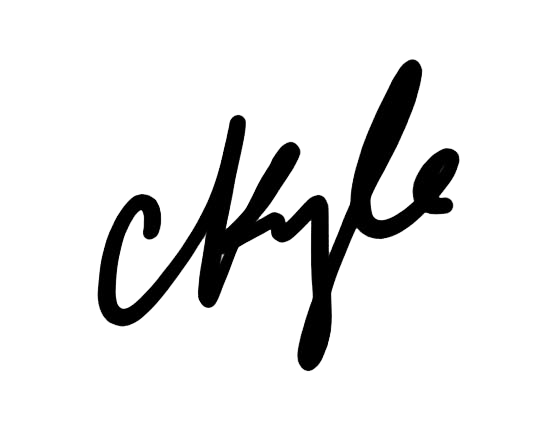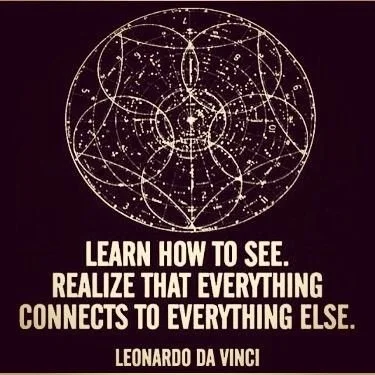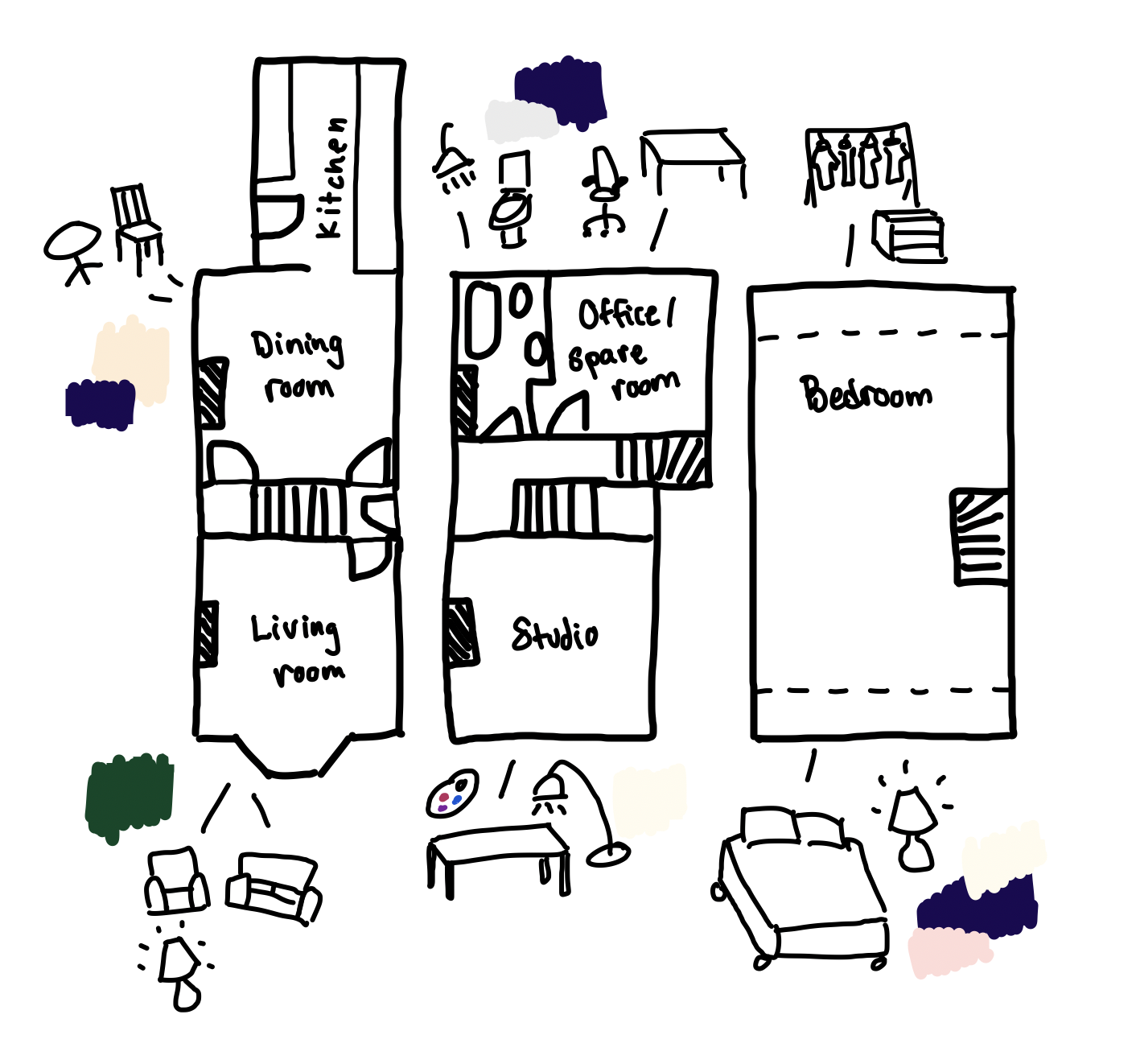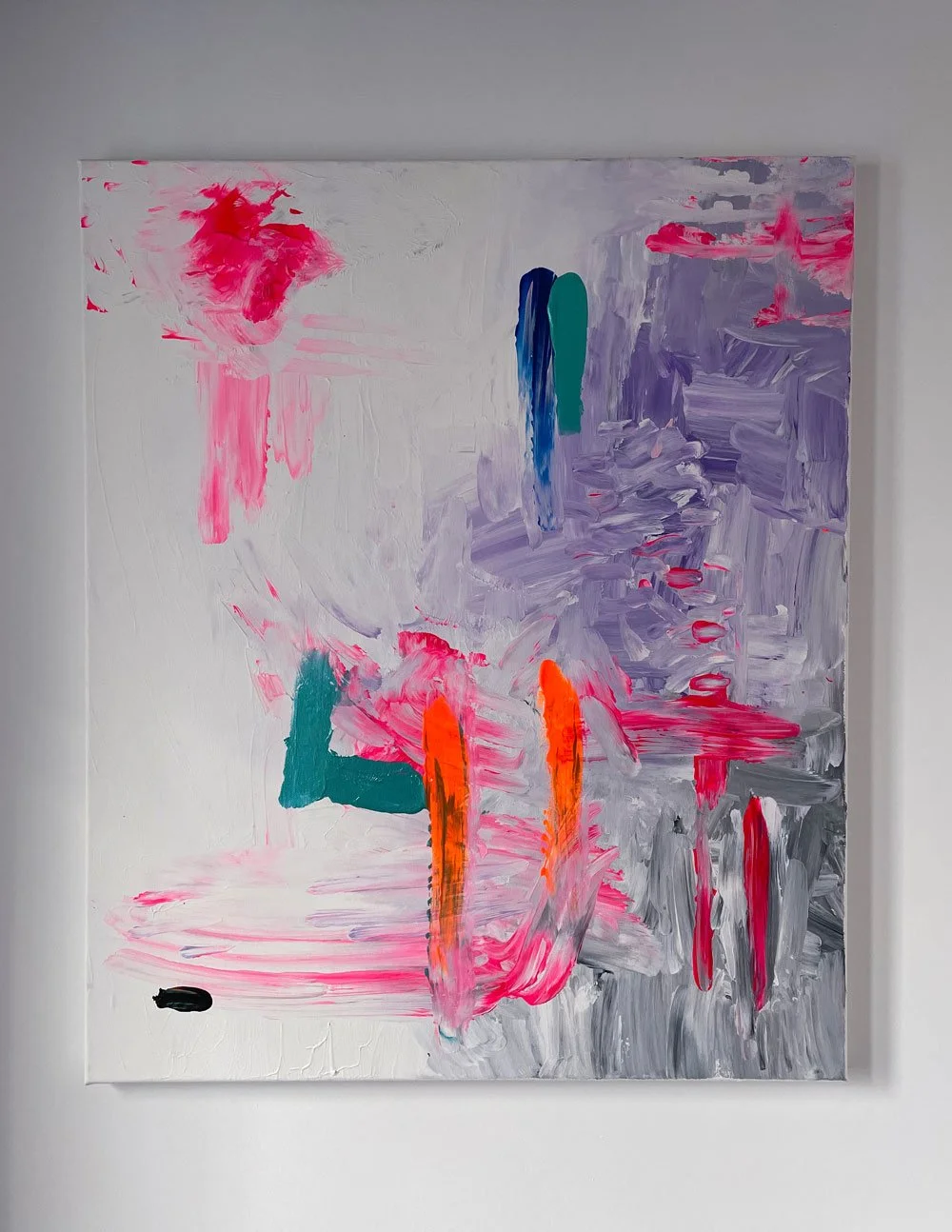The Art of Systems Thinking
What is systems thinking?
It is a way of seeing and understanding the world that takes a holistic view rather than just focusing on one thing at a time. It is a way of seeing both the forest and the trees, or the organism as well as its individual cells—and to understand not only the parts, but the relationships between them. To see how things interrelate.
To think in systems is to develop a deeper awareness of the interconnected parts of all things. It is to see how everything is connected; to understand and find out where the levers are in seemingly messy or complex situations. It is to empower yourself to conquer what are called “wicked problems,”—problems with seemingly no beginning or end, with no clear path or solution. To understand a system means you can start influencing and manipulating problem areas to achieve better outcomes, no matter how complex the overall system is.
How does it help?
Everything is either part of a system or is an output of a system. Everything is connected.
Thinking in terms of ‘systems’ helps you to break down and work with complexity—things that you can’t really see and objectify, things that don’t seem to have a direct cause and effect, things like:
Your inner world—your mental health, habits, thought patterns are part of a system that include psychological, physiological and sociological factors
Your outer world—relationships with others, the feelings you get from interacting with the world
Your work—finding ways to scale your impact, change your career or take actions that help you build toward a better tomorrow
Your hobbies—discovering things to do, trying out new things, optimizing your personal space and calendar to enable you to do things that you find satisfying
And everything else in the world—politics, charity work, helping each other, improving conditions for future generations, protecting the earth, saving the planet
These are all systems, and they are all interconnected.
My experiences with systems thinking
At work
I was first introduced to the concept of ‘systems thinking’ about 8 years ago, at the start of my career in IT. It is a practice that enabled me as a designer to understand the interconnected parts of the software we were building and the services we were delivering through the software interface. I came upon it through studying ‘service design’ and throughout my entire career in IT, it has been the bedrock of everything I do.
However, the practice of systems thinking is something I realized I’d been doing even before I learned the terminology, in my previous career working in publishing and media. I didn’t know it at the time, but the practices we used then to map and model the content, photography, and the systems we created to speed up design and delivery of magazines, books and digital content was a practice of systems thinking.
In the professional realm, we love processes—especially in IT. I’ve yet to work for an IT business that wasn’t desperately seeking to scale, and frankly well designed systems that abide by certain laws will scale. Processes are the recipes we create to try and define and further enable systems to operate optimally while on a growth path—every business leader secretly wants to be the Henry Ford of their sector. What did Henry Ford do? He created systems and processes for manufacturing cars efficiently and at speed, forever changing the landscape of manufacturing and production with moving assembly lines.
Mental health
In my personal life, I encountered something like ‘systems thinking’ when I started practicing meditation. In 2016, after moving across the pond, I found myself in a particularly stressful situation where I was trying to build a new life without having healed from the past. My mental health was suffering and I needed help to untangle the negative thought patterns those hardships had implanted in my head. Meditation was one avenue I tried, and I found it to be the most effective because it enabled me to observe, act, learn and adapt my own thought patterns from negative ones to more positive ones. The Buddha is a systems thinker too, it turns out! Dealing with my mental health, with my own mind, was perhaps the most complex system I’ve ever confronted and ‘designed’ or ‘manipulated’ into a more positive state—and one that requires continuous monitoring and improvement, like any living system. But its a lot easier for me to deal with it when I consider all the parts that influence it (like my habits, the food and media I consume, the people I spend time with, the work I do).
Running a marathon
In my last post, I talked about how I designed myself into a marathon runner by treating my body like a system rather than just focussing on the object of finishing the marathon. I knew that there was a lot of complexity in my body system, and certain alignments between my nutrition, training, and rest needed to be achieved in order to perform within certain parameters.
My art
Even with my artwork, over time I’ve developed systems of doing art—when one decides to do 500 paintings (and give them all away), and then faces that stacks of canvases that get delivered by auto-subscription each month (thanks Amazon), one devises ways to create paintings more efficiently over time! I’ve had to invent my own “assembly” lines.
Home renovation
Renovating my home involves coordination between multiple systems of objects (physical things in the house) and human resources (trades and myself). I knew as soon as I started the project I would need to pace the work a certain way, and given the multiple rounds and extraordinary costs involved to do everything from stripping the place down (stripping wallpaper, old plaster, floors and other fixtures), to then building it back up again (re-plastering, sanding, painting, varnishing and installing new fixtures) it was crucial I understood, to the best of my ability, the objects within my home system, as well as the relationships and interactions between everything human or not that goes on within the confines of my house.
For example, I knew that the process of stripping down and renovating the bathroom would create ancillary damage—I could not conceive of any path that wouldn’t lead to damage happening on the periphery of that project, like scraping plaster or damaging floors while trades were up and down the stairs breaking up and toting away old tiles and fixtures—so I scheduled this project to happen at the very beginning. My hunch was right, too—had I done other work before the bathroom, like re-plastering the walls or putting carpet in the hallway, so much of that would have had to been repaired or replaced after the incredible mess of replacing the bathroom!
How to apply systems thinking
As ever, I’m going to follow the formula of the creative process here, because in order to impact a system, you need to leverage your creative abilities: Observe, act, learn and adapt.
Observe
Mapping
When facing a complex problem or big challenges, the first thing you want to do is develop a current-state understanding of whatever you’re working with. If you read my first article on creative process, you’ll see how Leonardo da Vinci practiced observation by sketching and taking notes on his environment. In my last article about running the marathon, my current state ‘map’ was the fasted run I did at the beginning of my training — I didn’t draw an actual map then, but I had data in my fitness app, notes in my training journal and memory to define and remember my starting point.
When understanding a system, you almost always will start with “what are the objects involved?” — early on, you might be able to create a simple map to illustrate those things. I like to refer to those maps as “game-boards,” because its easier to imagine how you might then be strategic about moving objects and players around the board to drive a certain outcome.
I’m going to use my home renovation as an example:
Objects: A house has rooms, those rooms contain surfaces and fixtures; those surfaces and fixtures have certain attributes (color, texture).
This is my game-board. It’s where I can place my ‘players’ and start making decisions about the actions that we’ll take.
Players: A house contains occupants (me and my cat), who have certain needs that need to be fulfilled within the confines of the house.
Once you’ve got your game-board set up, its time to explore things that will govern the game and determine our actions.
Interactions: The occupant is an artist and creative and needs space to make and create; she needs a quiet and restful place to sleep and recharge; she loves hot baths but prefers to take those outdoors (hot tub or exterior bath/shower) and sees the bathroom as a utility of daily life rather than a grand feature; she preps and cooks food daily but doesn’t need a lot of space to meet her daily food needs; she needs space for her cat to have his food and water bowls and his litter tray stored somewhere sensible and accessible; she wants to enjoy the fireplaces in the winter, and needs space to stretch out to do exercises and yoga throughout the year. She doesn’t entertain much, but needs a way to quickly modify her environment for company on occasion.
Intentions: The occupant works a full time job, but is engaged in creative and physical activities outside of work that need to be highly accessible, not stored or hidden away. The occupant sometimes works remote, but does not want her day-job to become a feature of her home—her day-job work-space needs to be minimal, her creative space, maximal.
Feelings / emotions: The occupant likes to engage all senses, so she expects the final decisions in her home to generate sensory experiences with textures and smells attuned to her tastes based on these keywords—natural, warm, forest, sunset, calm.
Constraints: The occupant expects to live in this house during most of the renovation process; she can vacate the house on occasion depending on the type of work being undertaken, but must keep those timelines strict. The occupant wants to minimize repairs after the renovation process, and would rather let the damages accumulate and batch-process fix them later rather than to be continuously fixing and amending problems as the work rolls on.
That information forms both the current state (game-board) and rules of play. In product design, you might see user journey maps or service design blueprints used to describe current states—and rules of play expressed with tools like empathy mapping or Jobs to be Done. But really its just a way of describing the current state of the environment, and how we expect players, in interaction with the objects of their environment, to deliver outcomes around certain expectations based on the interactions, intentions, emotions and constraints present in the environment and its players.
Act, Learn and Adapt
Creating a vision
I love vision boards and / or vision statements. Vision boards are easy to put together by clipping or saving images in one place. The way I create vision boards is by opening a program where I can work on an artboard—apps like Mural or Notability provide a nice working space to build on. Then, I add photos that represent the end state, or vision, of whatever I want to achieve. I prefer using the artboard apps because it lets me create a collage that I can print out on an A4 paper and hang up in my office, or tuck it in my journal so I can reflect on it daily. For vision statements, my favorite method is the one popularized by Amazon—the press release. If you’re not a visual person, this one’s for you—write a press release for the thing you want to achieve. This is something that would read like a news bulletin about you and your success. It’s not something that will ever actually be released, so don’t worry if it sounds weird — just imagine what your successful end-state will look like and write a fake press release celebrating your goals.
Developing a strategy
Now that you have a vision, you’ll need to take actions to get there. Your vision board or statement is like a light-house that you can see from your ship out at sea… and simply seeing it will help you to get there, it acts as a guide.
Work out what tasks or activities you need to do in order to accomplish your goals. List out all the jobs you can think of that will need doing, then start re-ordering that list so that as you are finishing one job or set of jobs, you are setting the scene for the next job/s. This is systems thinking—mapping your to-do list as if they were inputs and outputs, sequencing events (like Ford’s moving assembly line) so that once a job is done, it puts you in a better position to complete the next job, and so on.
For my renovation, I knew the bathroom and plastering were going to be big messy jobs—but I also knew that the wallpaper would need to be removed first in order to enable these jobs to happen. There were so many jobs that I could have done sooner, like putting carpet on the stairs, re-finishing the surfaces in the kitchen; but I knew that if I replaced the carpet too soon, it would get damaged with all of the other work going on, and of course ultimately I’d need to paint the freshly plastered walls, so why put carpet down before the painting is done? And for the kitchen, I was able to do some small improvements early on to make the kitchen more palatable to use—like sanding and oiling the wooden countertops to help waterproof them—but I knew if I updated the tile too soon, it might not work in harmony with the color and surface aesthetic choices I needed to make for the rest of the kitchen and dining room, and I wasn’t prepared to make those color decisions until I’d removed all the old stuff and had all the walls re-plastered. I didn’t want to regret my decisions and have to re-do a bunch of stuff—nothing is more annoying than re-doing work!
Batch processing is something else I love doing—its taking your to-do list, and not only sequencing but batching jobs together to make more efficient use of your precious time and energy (and it is precious). For example, as I’ve been painting, I’ve also been updating the light and electrical fixtures, painting and re-fixing the radiators and cleaning up any other little details as I move from room to room. That way as I finish painting I can leave each room knowing that it is finished (and, finally, I can unpack properly!).
Manipulations vs. direct actions
I’ve been giving an example of the system of my house, which is tangible and has clearly actionable tasks. But sometimes we work with problems that aren’t so tangible.
An example of this might be “I’m not finding enough time to do art.” This is a problem that doesn’t have a clear and obvious solution, maybe I need to adjust my schedule, or it could be that I’m lacking motivation and inspiration, or something else. In these cases where you have a problem area that you want to improve, you can follow a similar process of creating a vision for what good looks like, then start making manipulations in order to try out what enables you to achieve your goal.
I used to have this exact problem actually, and at first I thought it was a factor of time—but then I found that even when I had the time, I wasn’t coming away with the feeling of joy I hoped my work would generate for me. So, I realized time wasn’t really the issue, the issue was that I just didn’t love the art I was making—I was putting pressure on myself to create art that was more realistic than expressive, so I would painstakingly grid out a canvas and then attempt to put something down that represented something real like animals or figures. But ultimately, I found that work difficult to commit to—it required a level of effort more akin to work than play.
Eventually I cleared off my work table, put away all of my usual painting tools and just tried painting with only my hands. That unlocked me. Painting with only my hands (yes, finger painting) brought me joy! From that point I realized, “OK this is it—I love doing art.” So I let go and started doing abstract art so that it served the part of me that I knew art could nourish, and brought me joy.
Note: I totally encourage anyone to try finger painting, but please be mindful and use non-toxic paints!
Eventually, I uncovered another factor that further enabled me to do more art and that was to stop completely stowing my art supplies away—out of sight, out of mind is too true! That was a natural barrier to me just diving in and doing art, so I found a way to keep my art supplies to hand (near my work table) so that jumping in and out of my work got easier and easier over time. I made multiple manipulations to the system of doing art, and eventually optimized it so that I can paint and create more. First I had to manipulate my practice, then I had to manipulate my environment.
Its your turn
What are some complex problems you think you might be able to apply this process to?
What are some areas of your life or work that might benefit from a systems-thinking approach?
Tips for getting started:
Be sure to focus on areas that are within your control—nothing is more frustrating than spinning your wheels trying to change something that you truly have no control over.
Follow the process—understand your current state and create a vision for where you want to go; think through your expectations, interactions, emotions, and desired outcome, then capture that in a vision board or statement (press release).
Make a ‘to-do’ list, but then re-order and prioritize things or batch-process your to-dos so that as you finish one set of tasks, you’ve set the stage for the next set to be done more efficiently. Your time and energy are precious!
I hope this article helps you slice through big wooly problems or challenges and helps you make progress. If you have any questions or comments, please drop them in Substack! And be sure to subscribe to my newsletter for more updates and insights on creative living.





